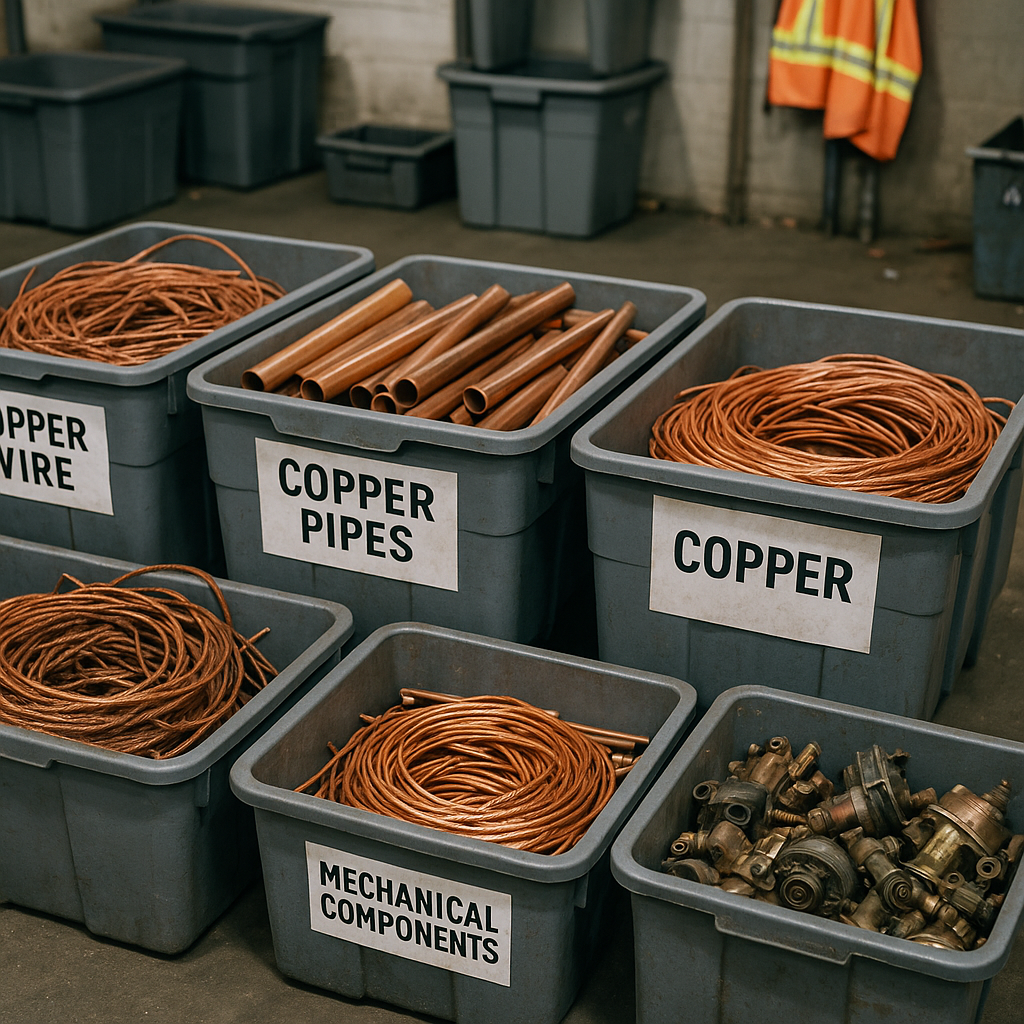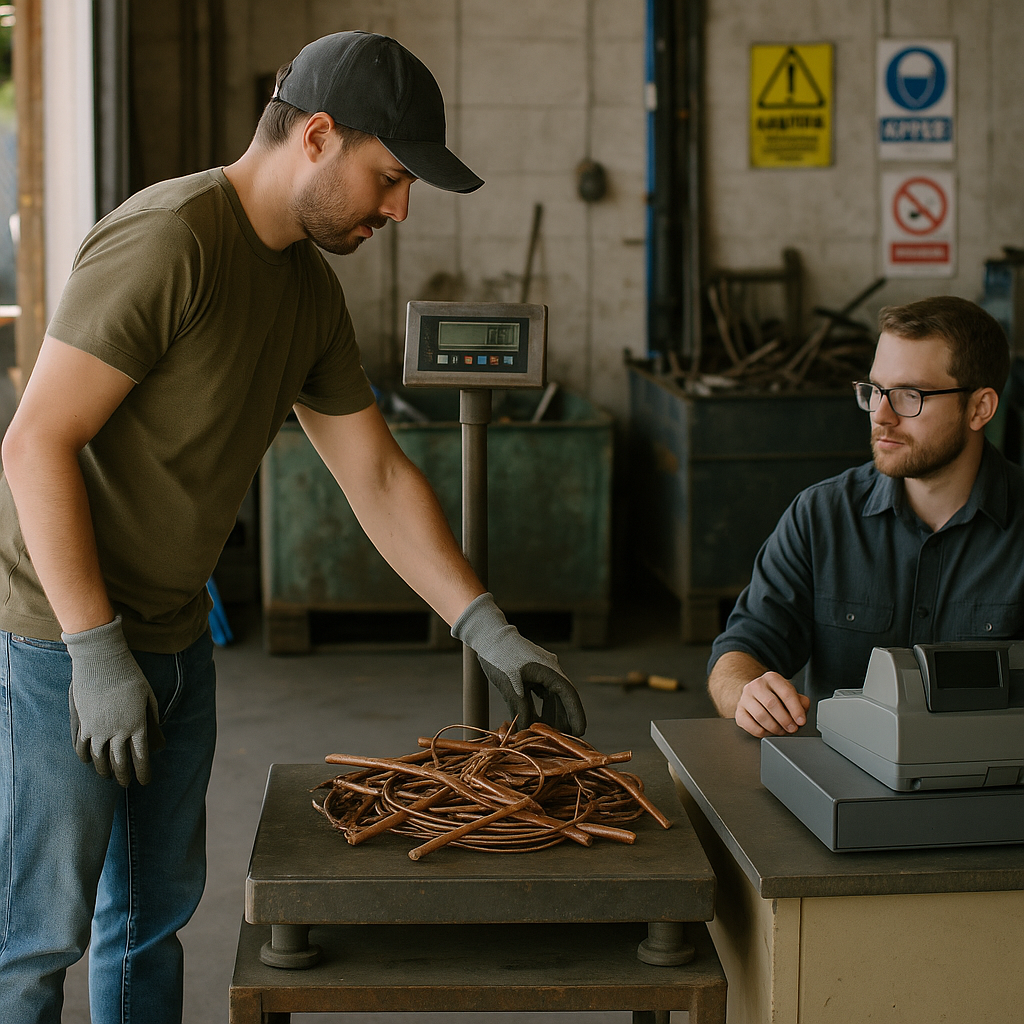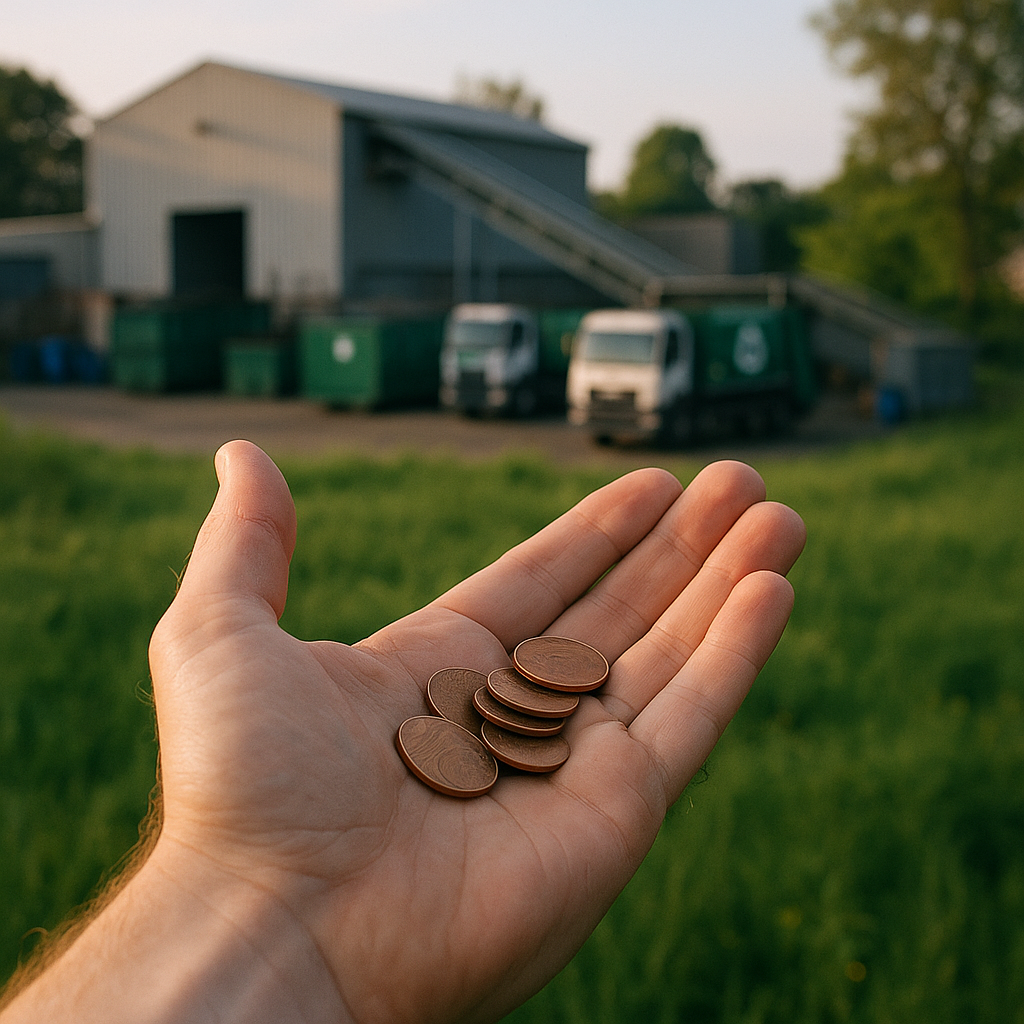5901 Botham Jean Blvd, Dallas, TX 75215
What Is Scrap Copper and Why Is It Valuable?
June 9, 2025Scrap copper refers to recyclable copper materials collected from various sources, including discarded electrical wiring, plumbing pipes, industrial machinery, and manufacturing byproducts. This versatile metal is highly sought after in the recycling industry.
The value of scrap copper primarily lies in its exceptional conductivity. Few materials match copper’s efficiency in conducting heat and electricity, making it essential for numerous applications in electronics, construction, and industrial machinery.
Copper’s economic value is complemented by its environmental benefits. Recycling copper requires about 85% less energy than mining and processing new ore, leading to lower carbon emissions and reduced environmental impact. The metal can be recycled repeatedly without losing quality, making it a sustainable resource in today’s circular economy.
What Are the Different Grades of Scrap Copper?

Understanding scrap copper grades is crucial for anyone recycling this valuable metal. Scrap copper is categorized by purity, quality, and specific characteristics, with each grade commanding different market prices.
Bare Bright Copper: The Premium Grade
Bare bright copper is at the top of the scrap copper hierarchy. Often called “bright & shiny copper,” this grade represents the highest quality and most valuable form of copper scrap.
Bare bright copper must meet strict criteria: it must be unalloyed wire or cable no thinner than 16 gauge, completely stripped of insulation, and free from paint, coatings, or oxidation. Its bright, shiny appearance gives this grade its name.
Only copper wire qualifies for this classification—copper pipes, regardless of condition, cannot be categorized as bare bright. This grade typically fetches the highest prices in the recycling market.
#1 Copper: High-Quality Scrap
The second most valuable grade is #1 copper. This includes bus bars, clippings, commutator segments, and wire at least 1/16th of an inch in diameter. To qualify, the copper must be clean, unalloyed, and uncoated.
Clean copper tubing can sometimes qualify as #1 copper if it’s free from fittings, insulation, paint, and solder. Minor oxidation is generally acceptable, but the copper must remain largely clean and uncontaminated.
#1 copper maintains approximately 98% purity, making it highly desirable for recycling operations that need minimal processing before reuse.
#2 Copper: Standard Grade Scrap
Ranking third in value is #2 copper. This grade typically has a somewhat dirty appearance and includes miscellaneous unalloyed wire, pipe, or solid metal with coatings such as solder or paint still attached.
#2 copper must maintain a minimum copper content of 94-96%. Wire must be bare of insulation but can be thinner than 1/16th of an inch in diameter. End fittings are generally accepted, and some oxidation is permissible.
This grade requires more processing to purify, which explains its lower value compared to bare bright and #1 copper.
[[artifact_table]] Comparison of Scrap Copper Grades and Their Characteristics [[/artifact_table]]Insulated Copper Wire Classifications
Copper wire with insulation follows its own grading system based on the type and amount of insulation and the expected copper recovery yield.
#1 insulated wire consists of clean, unalloyed copper wire or cable with plastic insulation. It must be 16 gauge or larger with all ends properly cut. If the insulation were removed, the wire should resemble bare bright copper.
#2 insulated wire includes unalloyed wire thinner than 16 gauge with heavy, double, or plastic insulation. This category often covers telecommunications wiring, extension cords, and outlet cords. Some coatings and minor corrosion are acceptable within this classification.
Special Categories and Considerations
Additional classifications exist for specific copper items. For example, copper breakage, which includes various smaller copper pieces, and copper-bearing scrap, which contains recoverable amounts of copper mixed with other materials.
Recycling facilities often use sophisticated separation technologies to recover copper from these mixed materials, though the processing costs impact the prices paid for these grades.
How Can You Sell Scrap Copper for Cash?

Selling scrap copper can be profitable when approached strategically. Success depends on finding trustworthy buyers who offer fair market rates for your materials. Local scrap yards and recycling facilities are often the most accessible starting points.
These facilities typically pay cash on the spot after weighing and grading your copper. Prices fluctuate daily based on global metal markets, with current rates around $4.20 per pound for high-quality copper. Remember, prices vary significantly by region and change weekly.
For those with substantial quantities, some recycling companies offer mobile pickup services, which eliminate transportation hassles. However, rates might be slightly lower to offset collection costs. Before scheduling a pickup, confirm their pricing structure and minimum quantity requirements.
Preparing Your Copper for Maximum Value
The condition and grade of your copper directly impact its value. Bare bright copper—clean, uncoated copper wire—commands the highest prices. The #1 and #2 copper grades follow in value, with insulated wire and mixed copper bringing lower returns.
Take time to separate your copper by grade before selling. Remove non-copper attachments, insulation, and contaminants whenever possible. Many buyers pay premium rates for pre-sorted, clean material that requires minimal processing.
Stripping insulation from copper wire, though labor-intensive, can significantly increase your earnings. The price difference between bare copper and insulated wire often justifies the extra effort for serious sellers.
Finding the Best Buyers
Research is crucial when selecting where to sell your scrap copper. Beyond local scrap yards, consider specialized metal recyclers who may offer better rates for certain grades. Online marketplaces connect sellers with industrial buyers, sometimes fetching higher prices than local options.
Before finalizing any sale, call multiple buyers to compare offers. Prices can vary substantially between facilities, even in the same city. Ask about their grading criteria and any minimum quantity requirements they might have.
Tools like the London Metal Exchange (LME) website or platforms such as ScrapMonster provide current market pricing information. Checking these resources before selling gives you leverage in negotiating fair rates with potential buyers.
What Are the Benefits of Recycling Copper Scrap?
Recycling copper scrap offers significant energy efficiency benefits, requiring up to 85% less energy than extracting and refining copper from raw ore. This energy saving leads to reduced carbon dioxide emissions and a smaller environmental footprint.
Environmental Sustainability
Copper recycling greatly reduces the need for mining virgin copper ore, conserving natural resources and protecting biodiversity and ecosystems that mining would otherwise disturb.
The environmental benefits extend beyond land preservation. Recycling copper minimizes the water and air pollution associated with traditional copper extraction and processing methods. Each ton of recycled copper represents a measurable reduction in greenhouse gas emissions.
Copper’s unique property of being indefinitely recyclable without quality loss makes it ideal for circular economy principles. Unlike some materials that degrade through recycling cycles, copper maintains its valuable properties regardless of how many times it’s processed.
Economic Value
The financial benefits of copper recycling are substantial for businesses and individuals. Scrap copper commands high market prices, creating monetary incentives for proper collection and recycling.
Cost savings extend throughout the supply chain. Recycling copper is more cost-effective than mining new copper because it requires less energy, labor, and processing. These savings can be passed along to manufacturers and ultimately consumers.
The copper recycling industry generates significant employment opportunities. Jobs are created in collection, processing, and manufacturing sectors, contributing to economic growth while supporting environmental goals.
Meeting Global Demand Sustainably
Global copper demand continues to rise with technological advancement. Recycling plays a crucial role in meeting this demand without exhausting finite natural resources.
Copper’s essential role in green technologies makes its sustainable sourcing particularly important. Electric vehicles, renewable energy systems, and energy-efficient appliances all depend on copper components. Recycled copper helps ensure these technologies truly deliver environmental benefits.
By creating a sustainable cycle that keeps valuable copper in use, recycling reduces waste while minimizing the need for extracting new materials. This closed-loop approach represents the future of responsible resource management.
Conclusion: Turning Scrap Copper into Cash and Environmental Benefits

Selling scrap copper offers unique advantages. By accurately identifying copper grades, finding reputable buyers, and preparing your materials properly, you can maximize the financial returns from your recyclable copper. The high demand for copper ensures your scrap has significant market value.
Besides financial benefits, recycling copper provides substantial environmental advantages. Every pound of recycled copper reduces the need for energy-intensive mining operations, protecting ecosystems and biodiversity. Copper recycling uses up to 85% less energy than mining and refining new copper, greatly decreasing the carbon footprint associated with copper production. By recycling copper, you support the circular economy, keeping this valuable metal in use and out of landfills.
Ready to turn your unused copper items into cash while supporting sustainable practices? Contact Okon Recycling at 214-717-4083 for expert guidance on recycling your copper materials and other metals.
